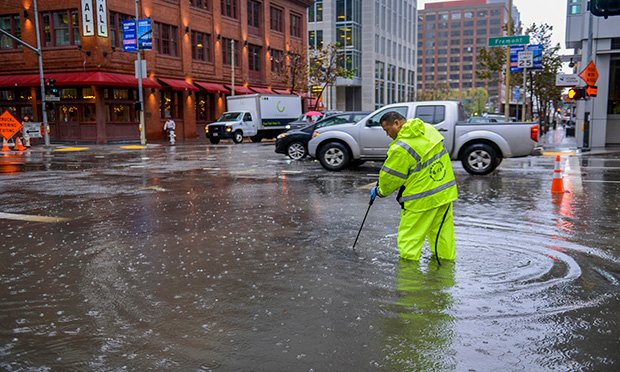 A San Francisco Public Works employee works to unclog a drain in San Francisco, Calif. on Dec. 11, 2014. San Francisco was reeling under a Pacific storm that flooded transit stations, grounded flights and left more than 90,000 people without power. (Photo: David Paul Morris/Bloomberg)
A San Francisco Public Works employee works to unclog a drain in San Francisco, Calif. on Dec. 11, 2014. San Francisco was reeling under a Pacific storm that flooded transit stations, grounded flights and left more than 90,000 people without power. (Photo: David Paul Morris/Bloomberg)
Meteorologists nationwide — the National Weather Service, California Department of Water Resources, U.S. Geological Survey and U.S. Army Corps of Engineers — have decided to begin rating atmospheric rivers (AR), storms that have the potential for millions of dollars in losses and severe flooding. But what exactly is an atmospheric river? It's a long, narrow river of condensed water vapor in the atmosphere that moves with the weather.
Recommended For You
Want to continue reading?
Become a Free PropertyCasualty360 Digital Reader
Your access to unlimited PropertyCasualty360 content isn’t changing.
Once you are an ALM digital member, you’ll receive:
- Breaking insurance news and analysis, on-site and via our newsletters and custom alerts
- Weekly Insurance Speak podcast featuring exclusive interviews with industry leaders
- Educational webcasts, white papers, and ebooks from industry thought leaders
- Critical converage of the employee benefits and financial advisory markets on our other ALM sites, BenefitsPRO and ThinkAdvisor
Already have an account? Sign In Now
© Touchpoint Markets, All Rights Reserved. Request academic re-use from www.copyright.com. All other uses, submit a request to [email protected]. For more inforrmation visit Asset & Logo Licensing.







